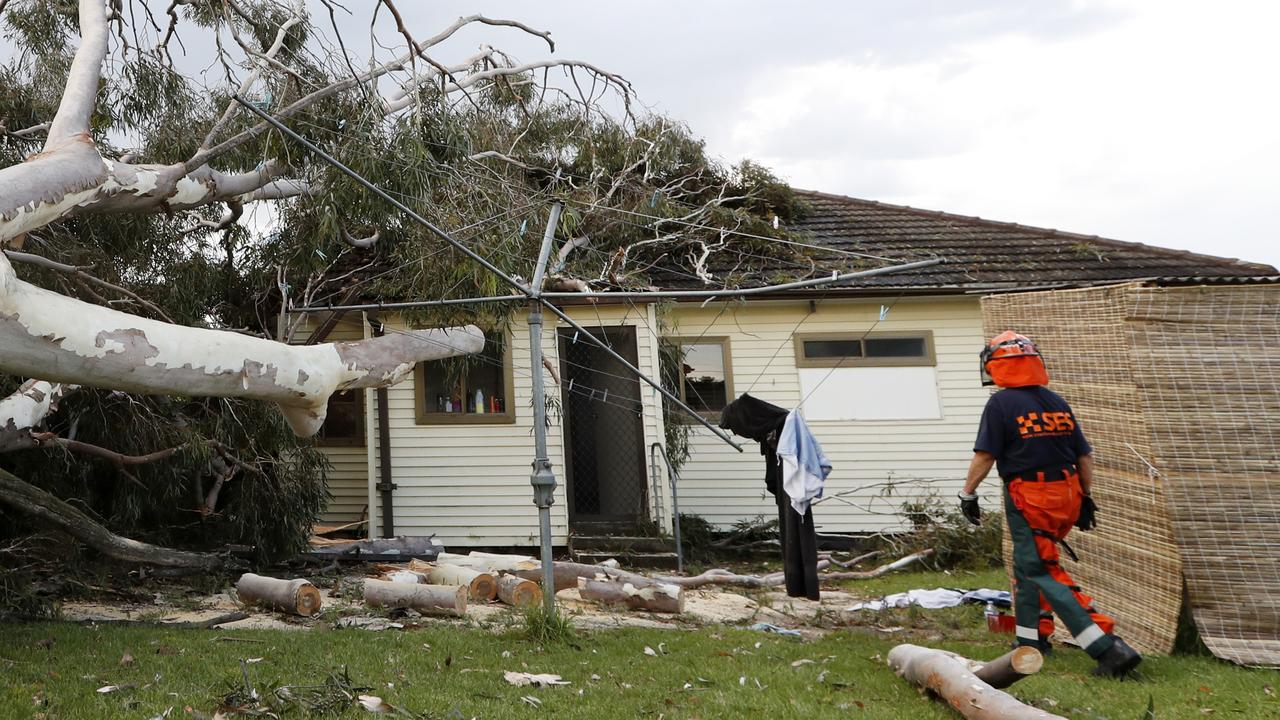Working from anywhere: your guide to the WFA revolution
You know it’s now possible, but before you close your office and go remote, there are some pluses and minuses to consider.

Before 2020 a movement was brewing within knowledge-work organisations. Personal technology and digital connectivity had advanced so far and so fast that people had begun to ask, “Do we really need to be together, in an office, to do our work?”
We got our answer during the pandemic lockdowns. We learnt that a great many of us do not need to be co-located with colleagues to do our jobs. Individuals, teams, entire workforces, can perform well while being entirely distributed — and they have. Now we face new questions: are all-remote or majority-remote organisations the future? Is work from anywhere (WFA) here to stay?
Without question, the model offers notable benefits to companies and employees. Organisations can reduce or eliminate real estate costs, hire and use talent globally while mitigating immigration issues, and, research indicates, perhaps enjoy productivity gains.
Workers get geographic flexibility (that is, live where they prefer to), eliminate commutes, and report better work/life balance. However, concerns persist regarding how WFA affects communication, including brainstorming, problem solving, knowledge sharing, socialisation, camaraderie, mentoring, performance evaluation and compensation, data security and regulation.
To better understand how leaders can capture the upside of WFA while overcoming the challenges and avoiding negative outcomes, I’ve studied several companies that have embraced all- or majority-remote models. They include the US Patent and Trademark Office (USPTO), which has several thousand WFA workers; Tulsa Remote, Tata Consultancy Services (a global IT services company that has announced a plan to be 75 per cent remote by 2025), GitLab (the world’s largest all-remote company, with 1300 employees), Zapier (a workflow automation company with more than 300 employees, none of them co-located, around the US and in 23 other countries), and MobSquad (a Canadian start-up that employs WFA workers).
The COVID-19 crisis has opened senior leaders’ minds to the idea of adopting WFA for all or part of their workforces. In addition to TCS, companies including Twitter, Facebook, Shopify, Siemens, and State Bank of India have announced they will make remote work permanent even after a vaccine is available. Another organisation I’ve studied is BRAC, one of the world’s largest NGOs, headquartered in Bangladesh. Forced into remote work this year, it is deciding what work model to adopt long term.
If your organisation is considering a WFA program, transition, or launch, this article can provide a guide. I’ve spent the past five years studying the practices and productivity trends of WFA companies. The upsides — for individuals, companies, and society — are clear. Let me outline them.
Benefits for individuals
One striking finding is how greatly workers benefit from these arrangements. Many told me they regard the freedom to live anywhere in the world as an important plus. For those in dual-career situations, it eases the pain of looking for two jobs in a single location.
One patent examiner told me: “I’m a military spouse, which means I live in a world with frequent moves and personal upheavals that prevent many spouses from pursuing lasting careers of their choice. WFA has been the most meaningful telework program I have encountered. It allows me to follow my husband to any US state at a moment’s notice and pursue my own aspirations to contribute to my home and society.”

Some cited a better quality of life. “WFA has allowed my children to see their grandparents on a regular basis and play with their cousins”, I heard from another USPTO employee. “Being closer to family has improved my overall happiness.” Others talked about proximity to medical care for children, accommodating their partners, and the ability to enjoy warmer weather, prettier views, and greater recreational opportunities. Millennials in particular seemed captivated by the idea that WFA would allow them to become “digital nomads”, travelling the world while still employed.
Before the pandemic-related restrictions, some companies, such as Remote Year, were aiming to facilitate that lifestyle, and some countries, such as Estonia and Barbados, have created a new class of employment visa for such workers.
As one patent examiner said: “Participation in [WFA] is outstanding for work/life balance. I live in my favourite part of the country … I have more time to relax.”
Cost of living was another frequent theme. Because the USPTO did not adjust salaries according to where employees chose to live, one patent examiner said: “I was able to buy a large home in my new location for about a quarter of the cost in northern Virginia.”
Some localities, such as the state of Vermont and the city of Tulsa, Oklahoma (where Tulsa Remote is located), have made a concerted effort to lure remote workers, touting the local community and lower costs. In San Francisco the average rent on a two-bedroom apartment is $4128; in Tulsa it’s a mere $675.
WFA also helps knowledge workers deal with immigration issues and other restrictions on their ability to secure good jobs. William Kerr, Susie Ma, and I recently studied MobSquad, whose coworking spaces in Halifax, Calgary, and other cities enable talented knowledge workers to bypass the onerous US visa and green card system and instead obtain fast-track work permits from Canada’s Global Talent Stream. Thus they can continue serving companies and clients in the US and other countries while living and paying taxes in Canada.
One engineer we interviewed had come to the US after graduating from high school in his home country at the age of 12. At 16 he enrolled at a US university, where he acquired degrees in math, physics, and computer science. By age 19 he was employed at a medical tech company through the optional practical training program, but he failed to get an H-1B visa and faced deportation. MobSquad moved him to Calgary, and he kept working with the same employer.
In interviews with female employees at BRAC, I learnt that women whose careers were previously limited by cultural taboos against travelling to remote places or delegating housework had been helped by WFA. As one explained: “Earlier I had to wake up early in the morning and cook three meals for my intergenerational family. Working remotely has allowed me to spread out the household work, get extra sleep, and be more productive.”
Benefits for organisations
My research also uncovered ample organisational benefits from WFA programs. For example, they increase employee engagement — an important metric of success for any company. In 2013, a year after it instituted work from anywhere, the USPTO was ranked highest on the Best Places to Work in the federal government survey.
Workers are not only happier but also more productive. When Cirrus Foroughi, Barbara Larson, and I evaluated the USPTO’s transition from WFH to WFA, the timing of which happened at random for workers who’d chosen that path, we found that WFA boosted individual productivity by 4.4 per cent, as measured by the number of patents examined each month. The switch also led examiners to exert greater effort. Of course, further research is needed to determine whether WFA generates similar benefits for workers performing different tasks in other team structures and organisations.

Some gains generated by WFA are more obvious. For example, fewer in-office employees means smaller space requirements and reduced real estate costs. The USPTO estimated that increases in remote work in 2015 saved it $US38.2m ($52.6m). WFA programs also hugely expand an organisation’s potential talent pool to include workers tied to a location far from that of the company. That’s a primary reason for the adoption at TCS of what it calls secure borderless workspaces, or SBWs: it wants to ensure every project is staffed by employees with the right skills, no matter where they are.
Rajesh Gopinathan, the CEO, describes this model as “talent on the cloud”, while another senior executive says it will potentially allow the company to tap niche labour markets, such as Eastern Europe, that have a large supply of skilled financial analysts and data scientists.
Finally, WFA can reduce attrition. Some USPTO workers explained that because they loved their preferred locales but also recognised the limited job opportunities there, they were motivated to work harder and stay longer with the Patent Office. Leaders at GitLab, too, pointed to employee retention as a positive outcome of the company’s decision to be all-remote.
The net benefit, they believe, including the productivity increases and property cost savings they’ve seen, equals $US18,000 a year for each worker.
Benefits for society
WFA organisations have the potential to reverse the brain drain that often plagues emerging markets, small towns, and rural locations. In fact, Tulsa Remote was established to attract diverse, energetic, community-minded newcomers to a city still healing from historic race riots a century ago. With an offer of $US10,000 to relocate to Tulsa, the company attracted more than 10,000 applications for just 250 slots from 2019 to 2020. Obum Ukabam was one of the workers chosen. When he’s not busy with his day job as a marketing manager, he mentors and coaches a local high school debate team.

Talented newcomers of varied ethnicities are arguably making the city more multicultural. Meanwhile, the transitions at the USPTO and TCS have brought many people back to their home towns.
Remote work helps the environment as well. In 2018 Americans’ commute time averaged 27.1 minutes each way, or about 4.5 hours a week. Eliminating that commute — particularly in places where most people commute by car — generates a significant reduction in emissions. The USPTO estimates that in 2015 its remote workers drove 84 million fewer miles than if they had been travelling to headquarters, reducing carbon emissions by more than 40,000 tonnes.
Successful interaction
The office — with its meeting rooms and break areas, and opportunities for both formal and informal interaction — has been a way of life for so long that it’s hard to imagine getting rid of it. And legitimate hurdles exist to making all-remote work not only manageable but successful.

However, the COVID-19 all-remote experiment has taught many knowledge-work organisations and their employees that with time and attention, those concerns can be addressed.
And in the companies I’ve studied, several best practices are emerging.
Brainstorm, problem solve
When workers are distributed, synchronous communication becomes more difficult. Tools such as Zoom, Skype, Microsoft Teams, and Google Hangouts can help for those working in the same or similar time zones but not for those spread farther apart. In research with Jasmina Chauvin and Tommy Pan Fang, I found that when changing to or from daylight saving time caused a one-to-two-hour reduction in business-hour overlap (BHO) between offices of a very large global corporation, the volume of communication fell by 9.2 per cent, primarily among production workers. When BHO was greater, R&D staffers conducted more unplanned synchronous calls. Group meetings are even harder to schedule. Nadia Vatalidis of GitLab’s People Operations group says that having team members in Manila, Nairobi, Johannesburg, Raleigh and Boulder made finding a time for their weekly group call nearly impossible.

WFA organisations must therefore get comfortable with asynchronous communication, whether through a Slack channel, a customised intracompany portal, or even a shared Google document in which geographically distributed team members write their questions and comments and trust that other team members in distant time zones will respond at the first opportunity. One benefit to this approach is that employees are more likely to share early-stage ideas, plans, and documents and to welcome early feedback; the pressure to present polished work is less than it would be in more formal, synchronous team meetings. GitLab calls this process blameless problem-solving. The company’s leaders note that employees accustomed to a culture of emails, phone calls and meetings may struggle to change old habits; they solve that problem with training during onboarding and beyond.
At Zapier, in a program called Zap Pal, each new hire is matched with an experienced buddy who sets up at least one introductory Zoom call and continues to check in throughout the first month. For synchronous brainstorming the company uses video calls and online whiteboards such as Miro, Stormboard, IPEVO Annotator, Limnu and MURAL, but also urges employees to use asynchronous means of problem-solving through Slack channel threads.
Knowledge sharing
This is another challenge for all-remote or majority-remote organisations. Distributed colleagues can’t tap one another on the shoulder to ask questions or get help. Research by Robin Cowan, Paul David and Dominique Foray has postulated that much workplace knowledge is not codified (even when it can be) and instead resides “in people’s heads”. This is a problem for all organisations, but much more so for those who have embraced WFA. The companies I’ve studied solve it with transparent and easily accessible documentation.

At GitLab all team members have access to a “working handbook”, which some describe as “the central repository for how we run the company”. It consists of 5000 searchable pages. All employees are encouraged to add to it and taught how to create a new topic page, edit an existing one, embed video and so forth. Ahead of meetings, organisers post agendas that link to the relevant sections to allow invitees to read background information and post questions. Afterwards, recordings of the sessions are posted on GitLab’s YouTube channel, agendas are edited and the handbook is updated to reflect any decisions made. Employees may see the extra work of documentation as a “tax” and baulk at the extremely high level of transparency necessary for a WFA organisation to thrive. Thorsten Grohsjean and I have argued that senior managers must set an example on these fronts by codifying knowledge and freely sharing information while explaining that these are necessary trade-offs to allow for geographic flexibility.
A related idea is to create transcripts, publicly post slides, and record video seminars, presentations and meetings to create a repository of such material that individuals can view asynchronously at their convenience. For its 2020 annual meeting, which was forced by the pandemic to go virtual, the Academy of Management curated 1120 prerecorded sessions, arguably expanding the flow of knowledge to scholars — especially those in emerging markets — far more than would have been possible at the in-person event, which typically happens in North America (and requires people to travel to attend).
Camaraderie, mentoring
Another major worry, cited by managers and workers alike, is the potential for people to feel isolated socially and professionally, disconnected from colleagues and the company itself, particularly in organisations where some people are co-located and some are not. Research by Cecily D. Cooper and Nancy B. Kurland has shown that remote workers often feel cut off from the information flow they would typically get in a physical office. Without in-person check-ins, managers may miss signs of growing burnout or team dysfunction. Even with videoconferencing that allows for reading body language and facial expressions, the concern is that virtual colleagues are less likely to become close friends because their face-to-face interactions are less frequent.

As GitLab’s technical evangelist Priyanka Sharma put it, “I was very nervous when I was first thinking of joining, because I was very social in the office. I worried that I would be so lonely at home and wouldn’t have that community feel.” Houda Elyazgi, a marketing executive on the Tulsa Remote team, expressed similar sentiments: “Remote work can be very isolating, especially for introverts. You almost have to create an intentional experience when you’re socialising with others. And then you have to be ‘on’ all the time, even when you’re trying to relax. That’s taxing.”
In my research I’ve seen a range of policies that seek to address these concerns and create opportunities for socialisation and the spreading of company norms. Many WFA organisations rely on technology to help facilitate virtual water coolers and “planned randomised interactions,” whereby someone in the company schedules groups of employees to chat online. Some use AI and virtual reality tools to pair up remote colleagues for weekly chats. For example, Sike Insights is using data on individual communication styles and AI to create Slackbot buddies, while eXp Realty, an all-remote company I’m currently researching, uses a VR platform called VirBELA to create a place for distant team members to gather in avatar form.
Sid Sijbrandij, a co-founder and chief executive of GitLab, told me: “I know at Pixar they placed the rest room centrally so people would bump into each other — but why depend on randomness for that? Why not step it up a notch and actually organise the informal communication?” These “mixers” often include senior and C-suite executives. When I described them to my colleague Christina Wallace, she gave them a nice name: community collisions. And companies have always needed to manufacture them: research dating back to Thomas J. Allen’s work at MIT in the 1970s shows that workers co-located on the same “campus” may not experience serendipitous interactions if they are separated by a wall, a ceiling, or a building.
When it comes to interaction between people at different hierarchical levels, my research has revealed two problems with straightforward solutions. Iavor Bojinov, Ashesh Rambachan, and I found that the senior leaders of a global firm were often too stretched to offer one-on-one mentoring to virtual workers. So we implemented a Q&A process whereby workers posed questions through a survey and leaders responded asynchronously. Senior managers at another global firm told me that they had difficulty being themselves on camera. Whereas young remote workers were “living their lives on Instagram”, their older colleagues found virtual engagement harder. The company implemented coaching sessions to make those executives more comfortable on Microsoft Teams.
Another solution to the socialisation problem is to host “temporary co-location events,” inviting all workers to spend a few days with colleagues in person. Before COVID-19, Zapier hosted two of those a year, paying for employee flights, accommodation, and food; giving teams an activities budget; and sending people home with $50 to use on a thank you gift for their loved ones. Carly Moulton, the company’s senior communications specialist, told me: “Personally, I have made a lot of friendships with the people I travel to and from the airport with. The event managers will put us into random groups based on what time you arrive and depart. I’ve always been with people I don’t normally work with, so it’s nice to have a dedicated time when you have to make conversation.”
Evaluation, compensation
How can you rate and review employees you’re never physically with, particularly on “soft” but important metrics such as interpersonal skills? All-remote companies evaluate remote workers according to the quality of their work output, the quality of virtual interactions, and feedback from clients and colleagues. Zapier uses Help Scout for customer support replies; a feature of this software is that customers can submit a “happiness score” by rating the response as “great”, “OK”, or “not good”.

In the spring and summer of 2020, as groups suddenly transitioned to remote work, I was asked whether managers should use software to track worker productivity and prevent shirking. I am very much opposed to this Orwellian approach. The USPTO addressed claims of “examiner fraud” and “attendance abuse” in its WFA program following a review by the US Commerce Department’s Office of the Inspector General. Those claims involved either overreporting of hours worked or shifts in the time logs of completed work, such as back loading at the end of a calendar quarter — neither of which related to the metric on which performance was measured: the number of patents examined. Nevertheless, from then on, all USPTO teleworkers had to use organisational IT tools, such as logging in to a virtual private network (VPN), having a presence indicator turned on, and using the same messaging services. But when we compared data from before and after that intervention, we found that it had no effect on average output.
How to set compensation for workers who work from anywhere is an active and interesting debate. As mentioned, it’s a benefit to be able to reside in a lower cost-of-living locale while earning the income one would in a more expensive one. But that’s conditional on the company’s not adjusting wages according to where a worker lives, as was the case at the USPTO. Matt Mullenweg, the founder of Automattic (parent of WordPress), another all-remote company, told me that its policy is to pay the same wages for the same roles, regardless of location. But GitLab and other companies do have different pay for different geographies, taking into account the experience of the worker, the contract type, and the task being performed. Although research is needed on which approach is optimal, it’s possible that companies that tie wages to location will lose high-quality WFA workers to rivals that don’t. Another pertinent issue is whether to pay WFA workers in the currency of the country where the organisation is incorporated or the local one, in part to ensure consistent wages across locations over time given exchange-rate fluctuations. Of course, WFA may not be possible at this time for some organisations, such as manufacturing companies — though that could change with advances in 3-D printing, automation, digital twins, and other technologies. However, with the right strategy, organisational processes, technologies, and — most important — leadership, many more companies, teams, and functions than one might have thought could go all or mostly remote.

My ongoing research with Jan Bena and David Rowat suggests, for example, that start-up knowledge-work companies, particularly in the tech sector, are well positioned to adopt a WFA model from their inception.
My studies of the USPTO and TCS indicate large and mature organisations, too, can successfully transition to a hybrid or a majority-remote regimen. The question is not whether work from anywhere is possible but what is needed to make it possible. The short answer: management. “If all senior leaders are working from an office, then workers would be drawn to that location to get face time,” one all-remote middle manager told me. But if leaders support synchronous and asynchronous communication, brainstorming, and problem-solving; lead initiatives to codify knowledge online; encourage virtual socialisation, team building, and mentoring; invest in and enforce data security; work with government stakeholders to ensure regulatory compliance; and set an example by becoming WFA employees themselves, all-remote organisations may indeed become the future of work.
Prithwiraj (Raj) Choudhury is the Lumry family associate professor of business administration at Harvard Business School. Copyright Harvard Business Review 2020/Distributed by New York Times Syndicate



To join the conversation, please log in. Don't have an account? Register
Join the conversation, you are commenting as Logout